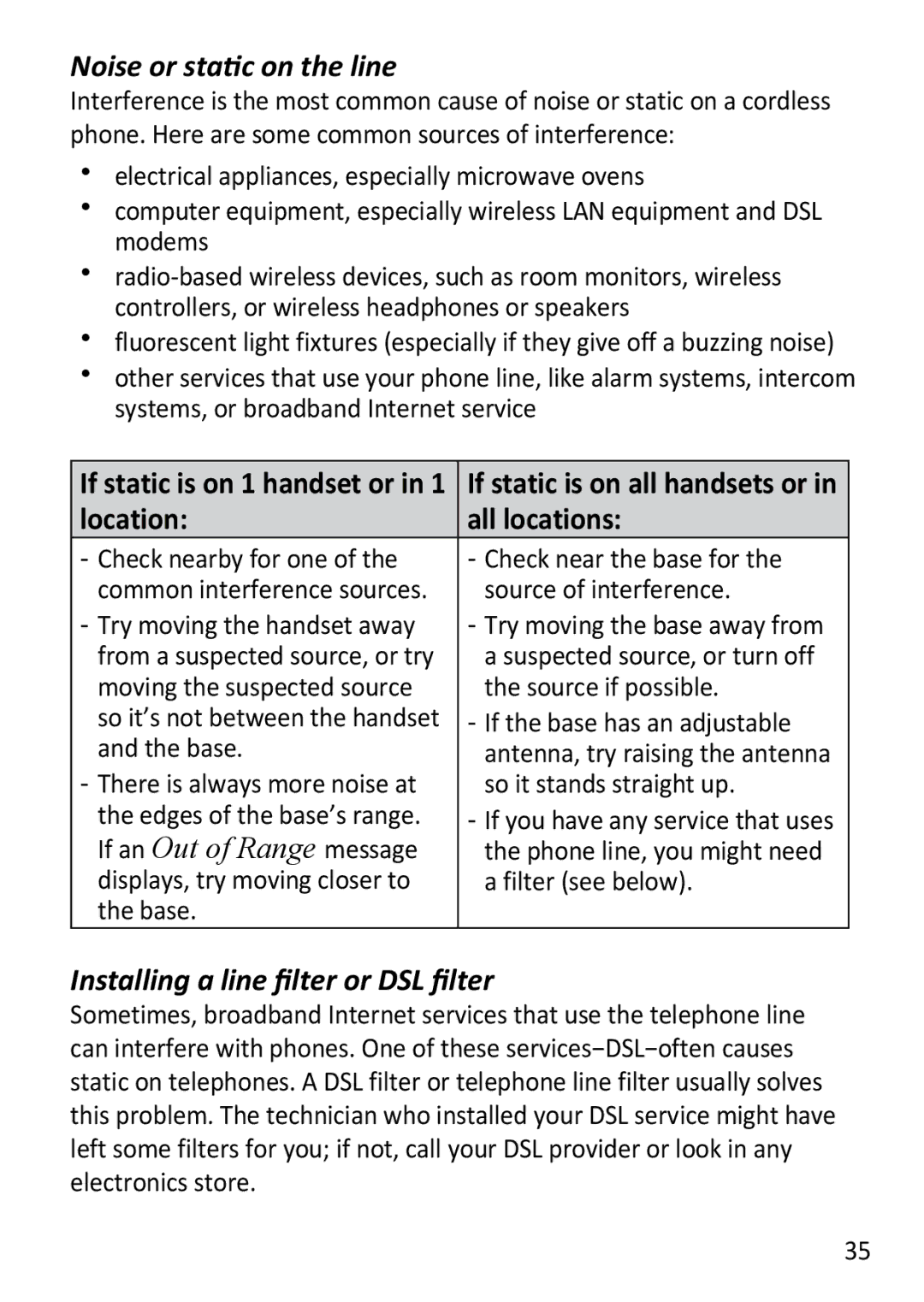Noise or static on the line
Interference is the most common cause of noise or static on a cordless phone. Here are some common sources of interference:
electrical appliances, especially microwave ovens
computer equipment, especially wireless LAN equipment and DSL modems
fluorescent light fixtures (especially if they give off a buzzing noise)
other services that use your phone line, like alarm systems, intercom systems, or broadband Internet service
If static is on 1 handset or in 1 | If static is on all handsets or in |
location: | all locations: |
- Check nearby for one of the | - Check near the base for the |
common interference sources. | source of interference. |
- Try moving the handset away | - Try moving the base away from |
from a suspected source, or try | a suspected source, or turn off |
moving the suspected source | the source if possible. |
so it’s not between the handset | - If the base has an adjustable |
and the base. | antenna, try raising the antenna |
- There is always more noise at | so it stands straight up. |
the edges of the base’s range. | - If you have any service that uses |
If an Out of Range message | the phone line, you might need |
displays, try moving closer to | a filter (see below). |
the base. |
|
Installing a line filter or DSL filter
Sometimes, broadband Internet services that use the telephone line
can interfere with phones. One of these services−DSL−often causes
static on telephones. A DSL filter or telephone line filter usually solves this problem. The technician who installed your DSL service might have left some filters for you; if not, call your DSL provider or look in any electronics store.
35
